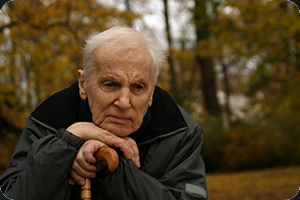Physical abuse is one of the most common forms of abuse in the world today. It often happens behind closed doors and people hardly ever talk about it. But are there any tell-tale signs of physical abuse?
While it might be difficult to tell whether one is going through physical abuse from a casual look, it is possible if you know what to look out for. If you suspect that someone is being physically abused, it is advisable to pay close attention to them. The dead giveaways are usually a change in behavior and demeanor. Below are some tips on how to detect physical abuse.
What Are the Signs of Physical Abuse?
In Children

Children may be abused by infliction of harm or failure to prevent harm. Abuse could happen in an institution, a family or a community setting by people who are familiar to them or by a stranger. The abuser can be an adult or another child. Child abuse can have long-term effects on the victim in terms of health, general well-being and development.
The physical and behavioral signs of abuse and neglect listed below do not prove abuse, as they could be a result of traumatic experiences such as divorce of the parents, death of someone close to the child or the arrival of a new sibling. For this reason, it is important to seek the advice of a professional whenever you suspect abuse.
- Injuries that are inconsistent with the explanations offered
- Presence of several injuries that are in different stages of healing
- Recurring injuries over a period of time
- Injuries with a certain shape or pattern. They may have been inflicted using an object such as a belt buckle or teeth. Cigarette burns and hand marks are also a sign of physical abuse
- Facial injuries in preschool kids and infants (e.g. bruises, sores, cuts)
- Injuries that are inconsistent with the age and development stage of the child
- Bald patches where hair has been torn out
- Injuries in places where the child is unlikely to have inflicted on themselves from a fall
- Injuries that seem like they haven’t received any medical attention
- Loss of enthusiasm or interest and social withdrawal. For example, the child may be reluctant to play and interact with others
- Inappropriate or delayed emotional development
- Loss of self-esteem and self-confidence
- Depression
- Stomachaches and headaches with no medical cause
- Avoiding certain situations such as refusing to go to school
- Desperation for affection
- Poor weight gain and growth
- Poor hygiene
- Lack of proper medical, psychological and dental care
In Women

Women are also likely to fall victim to physical abuse, especially in an intimate relationship. If a woman is in an abusive relationship, they are likely to exhibit some of the following signs of physical abuse.
- Besides noticing signs of physical abuse such as bruises, a woman that is being physically abused by the spouse is likely to fear their partner. They often feel like they are walking on eggshells and have to watch what they say or do to avoid confrontation. Often partners who are abusive tend to be controlling and make the woman feel helpless and desperate.
- If a woman is forced to participate in sexual activities that are unwanted, degrading or unsafe, this is sexual abuse. Sexual abuse is a form of physical abuse. People who are sexually abused are likely to have serious injuries and risk death.
- Emotional abuse in women includes name-calling, yelling, shaming and blaming. Intimidation, controlling behavior and isolation are also forms of emotional abuse. Emotional abusers can become physically violent whenever the abuser feels like his authority is threatened and cannot get what he want.
In the Elderly

As people age, they become more prone to physical abuse since they can no longer stand up to bullies or fight back when attacked. They are usually frail and may not hear or see as well as they used to. This leaves them vulnerable to people who might want to take advantage of them.
The abuse of seniors is quite rampant. In fact, over half a million reports of abuse are made in the US alone. Many more cases go unreported. Signs of physical abuse in the elderly include:
- Black eyes, lacerations, bruises, rope marks and welts
- Broken bones, bone and skull fractures
- Cuts, open wounds, punctures and unrelated injuries in different healing stages
- Dislocations, internal injuries and sprains
- Under-utilization of drugs prescribed by their doctor and lab findings of medication overdose
- A senior’s report of being kicked, hit, mistreated or slapped
- Sudden change in behavior
How Should I Deal with Physical Abuse
While escaping a violent relationship or situation does help, the recovery of the physically abused person will take much more. They will need special counseling in order to regain confidence and self-esteem. The journey to recovery can be challenging, but with the right kind of help, the abused person can get back on their feet in a relatively short period of time. A therapist will give the victim of physical abuse the chance to explore their painful memories in a safe and supportive environment. The sessions normally involve teaching the abused new perspectives and skills to build coping strategies and confidence through addressing conditions such as depression, trust issues, anxiety and post-traumatic stress disorder.
